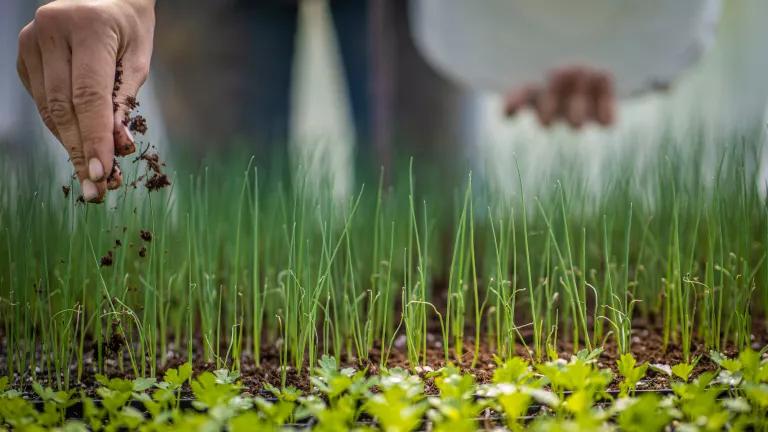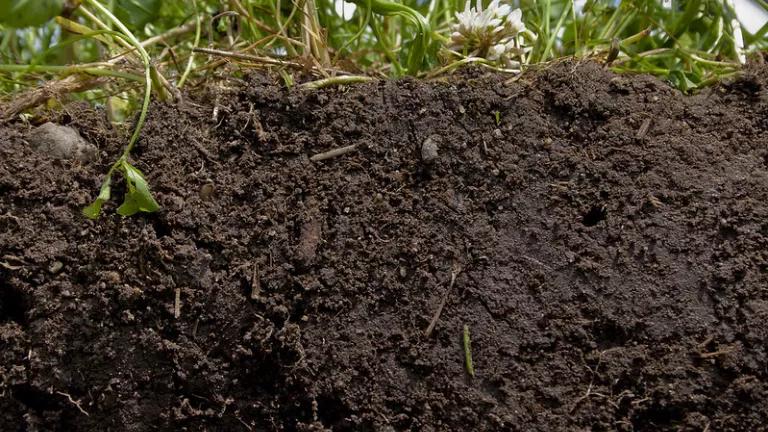Few Americans are as close to the front lines of climate change as farmers. According to the U.S. Department of Agriculture (USDA), about 80 percent of agricultural land experienced drought conditions in 2012. As farmers continue to deal with the ecological and economic impacts of this extreme weather, the USDA last week released a comprehensive synthesis of the scientific literature on the effects of climate change on U.S. agriculture.
The message was sobering:
"Climate change poses unprecedented challenges to U.S. agriculture because of the sensitivity of agricultural productivity and costs to changing climate conditions."
The agency also made clear that these changing climate conditions were the result of human action, stating that "strong scientific consensus highlights that anthropogenic [man-made] effects of climate change are already occurring and will be substantial."
As the climate changes, farmers not only face faster weed growth and new insect pests, but also more sporadic and intense rain, snow and storm events, as well as earlier warm seasons that will make getting water to crops at the right time much more challenging, greatly reducing yields. For livestock producers, the future looks equally challenging, with prolonged exposure to extreme temperatures and humidity increasing animal stress and resulting in costly productivity losses in meat, egg, and milk production, as well as escalating cooling costs on feedlots.
All of this spells a real threat to agricultural producers and our food supply.
As the report makes clear, savvy and adaptive farmers have always had to respond to variations in the weather. But the report points out that farmers have benefited from “a period of relative climatic stability and abundant technical, financial and natural resources” over the past century and half.
The future will be different, however:
“Future agricultural adaptation will be undertaken in a decision environment characterized by high complexity and uncertainty driven by the sensitivity of agricultural system response to climatic variability, the complexity of interactions between the agricultural systems, non-climate stressors and the global climate system, and the increasing pace and intensity of climatic change.”
In other words, this is a new era of extremes.
“U.S. climate will continue to change during the next century. It is very likely that the amount of change will be significantly greater and the rate of change more rapid than that experienced during the last 100 years. There will be more warm nights and longer periods of extreme heat, and the incidence of both drought and very heavy precipitation events is expected to increase.”
Good stewardship can help mitigate the impacts of climate change and limit damages to farmers. Management practices such as no-till farming, planting a more diversified mix of crops, and cover cropping can help farmers mitigate the risks associated with a changing climate. Unfortunately, federal funding for these farm practices is woefully inadequate and now threatened by deep, mandatory cuts scheduled to take place as a result of budget sequestration.
But what USDA’s report drives home is that adaptation strategies aren’t enough. Farmers would also benefit from meaningful action to curb the amount of heat-trapping gases our economy is pumping into the atmosphere:
“Continued increases in greenhouse gas emissions will increase the amount of climate change the United States will experience in the next 100 years. Limiting the increase in greenhouse gas emissions will reduce the rate and amount of climate change during this period.”
As my colleague Dan Lashof discussed here, the emissions reductions we need are within reach. U.S. emissions of carbon dioxide are on a downward trajectory. But the reductions achieved are far from adequate and there is no guarantee that they will continue.
NRDC recently issued an innovative plan showing how we can use the Clean Air Act to cut the dangerous carbon pollution from the nation’s existing power plants—responsible for roughly one-third of U.S. climate emissions. The plan would use fair and flexible design features to cut overall power sector carbon emissions 35 percent in 2025, from 2005 levels, achieving climate protection and public health benefits worth $26-60 billion in 2020, at a reasonable cost of $4 billion. Compare that to the $13.7 billion and counting in crop losses from last year’s drought alone.
We need to take immediate action to reduce power plant emissions, coupled with other measures to improve energy efficiency and to reduce emissions of methane and other heat-trapping gases. Together, this will put us on track to the emissions reductions we need to protect our health, the environment, and the economy from the worst consequences of climate change. A more stable climate will mean more certainty in the availability of water resources for both rain-fed and irrigated agriculture and less soil erosion through extreme precipitation events, as well as less prolonged exposure to extreme temperatures for livestock. This will benefit both American farmers and consumers.


